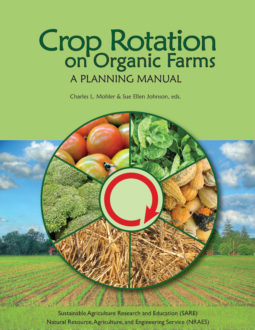Keep in mind that these sequences describe the cropping history of only one field or bed on farms that have many fields and beds (sometimes several hundred). Since the sequences were described, several farmers have reported that they continue to modify the sequences on the fields depicted as new lessons are learned or to deal with changing conditions and opportunities (see chapter 2).
Note that cash crops rotate among members of different crop families. A diversified cropping approach produces both resilience and flexibility, for optimal ecological and business management of a farming system.
Expert farmers’ crop sequences make sense for individual fields, but also for their farm businesses. Several farmers offered specific reasons particular crop sequences work for them. Jack Gurley believes he needs to maximize use of cover crops without losing growing space. Consequently, he looks for opportunities to interseed cover crops into cash crops (for example, hairy vetch into broccoli, white clover into tomatoes). In her no-till bed system, Polly Armour follows potatoes with winter squash that she mulches heavily, thereby controlling weeds arising from seeds that get stirred to the soil surface during potato harvest.
Cover crops fulfill diverse and multiple roles on these fields. The farmers stressed the importance of matching the cover crop to the following crop. For example, since crops differ in their ability to tolerate cover crop residues, some farmers plant winter-killed cover crops where early spring crops will be planted.
